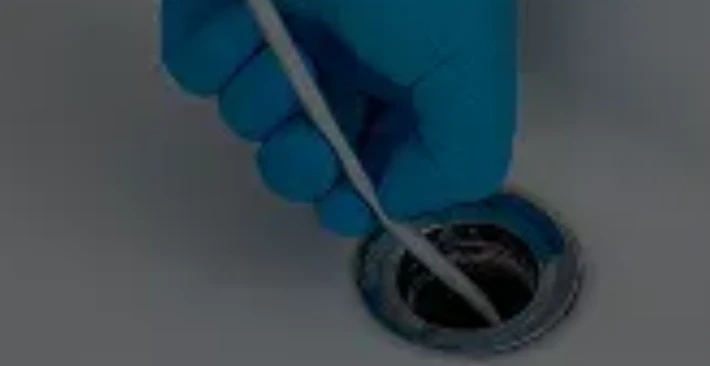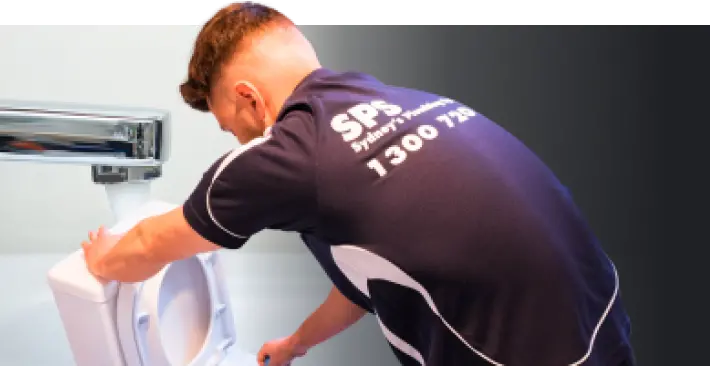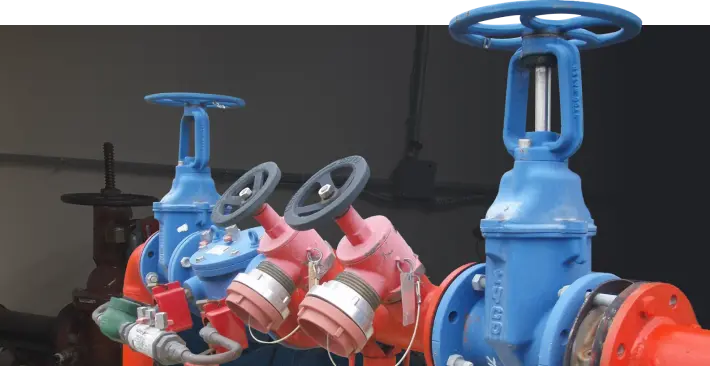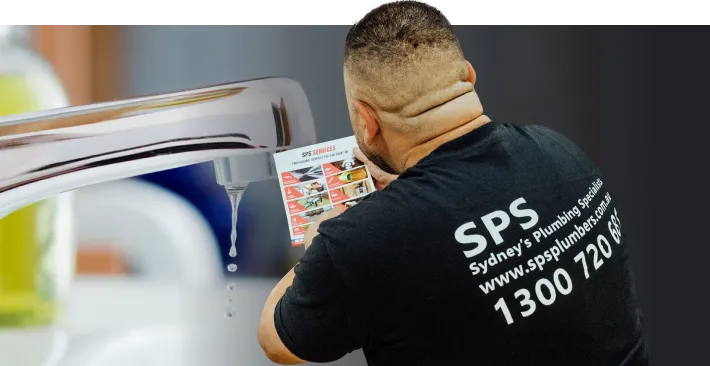A squeaky toilet seat can be frustrating, especially when you're trying to relax. Whether it creaks when you sit or squeals every time you move, it’s a problem that can be easily fixed. Most of the time, the cause is a loose toilet seat or dry hinges. Fortunately, fixing a squeaky toilet seat takes just a few simple steps, and you can do it yourself in no time.
If you want to stop your toilet from squeaking and get back to peace and quiet, keep reading. SPS Plumbing, your trusted Sydney plumber, can fix your toilet seat quickly and efficiently, so you don’t have to worry about those annoying noises.
Why Does My Toilet Seat Squeak?
Toilet seats make noise for a few common reasons. When your toilet seat squeaks, creaks, or groans, it’s usually a sign that something’s not right with the bolts, hinges, or lubrication. Let’s break it down:
- Loose Bolts: The seat is attached to the toilet bowl with screws and nuts. Over time, these can loosen, causing the seat to shift and squeak.
- Worn Hinges: Hinges can wear out, causing friction when you move the seat. This leads to squeaky or creaky noises.
- Lack of Lubrication: If the hinges aren’t properly lubricated, they can become stiff and start making noise.
In many cases, these issues are easy to fix with basic tools, so don’t worry if your toilet seat is making noise – it’s a problem you can solve.
Problems Caused by a Squeaky Toilet Seat
If your toilet seat is squeaking, it’s not just an annoying sound—it can cause bigger issues down the line.
- Loose Toilet Seat Noise: A noisy, wobbly seat can cause the toilet to become unstable. This can make sitting uncomfortable or even unsafe if left unresolved.
- Toilet Seat Damage: Over time, loose bolts or worn hinges can cause damage to the seat or toilet bowl. A squeaky seat could be a sign that the seat is becoming loose, which can eventually lead to cracks or other serious damage.
- Toilet Squealing or Screeching: If the sound becomes high-pitched and loud, it may indicate a bigger issue with the hinges or the seat’s alignment. Ignoring these sounds can lead to costly repairs down the road.
A squeaky toilet seat might start as a small issue, but left unchecked, it can cause bigger problems like broken hinges or even an unstable toilet.
Troubleshooting Guide: Find the Cause
Before jumping into a full fix, first identify what’s causing the noise. Here’s how to solve it based on the symptom:
|
Symptom |
Likely Cause |
Simple Fix |
|
Seat moves or wiggles |
Loose bolts |
Tighten bolts with a screwdriver or wrench |
|
High-pitched squeak when moving |
Dry hinges |
Spray silicone lubricant or WD-40 on hinges |
|
Creaking/cracking noise when sitting |
Worn or cracked seat |
Inspect for damage, replace if needed |
|
Noise persists after tightening |
Misaligned seat or hardware |
Realign seat and retighten screws/bolts |
This table can help you pinpoint the issue quickly and take action right away.
Tools You’ll Need for a Toilet Seat Fix
Fixing a squeaky toilet seat doesn’t require any fancy equipment. Here’s a simple list of what you’ll need:
- Screwdriver (flathead or Phillips, depending on your bolts)
- Pliers (for tightening nuts)
- Toilet Seat Tightening Kit (ideal for a toilet seat fix)
- Silicone Lubricant (for hinges)
- Replacement Bolts or Hinges (if necessary)
These tools are easy to find at your local hardware store and are essential for making your toilet seat squeak-free.
When It’s Not the Seat
Sometimes the noise isn’t coming from the seat at all. Loose toilet tanks, uneven flooring, or even water supply pipes can create squeaks or creaks that sound similar. If you’ve tried the usual seat fixes and the sound continues, it may be a bigger plumbing issue.
How to Fix a Squeaky Toilet Seat (Step-by-Step)
Follow these simple steps to fix your squeaky toilet seat in no time.
Step 1: Prepare the Area
Before you begin, make sure the toilet seat and surrounding area are clean and dry. Close the seat so you have clear access to the hinges and bolts. This makes the job easier and prevents dirt or grime from getting in the way while you work.
Step 2: Expose the Screws
Most toilet seats have a plastic cover that hides the screws. Use a screwdriver to gently lift the cover. Be careful not to crack it, as plastic covers can break easily.
Step 3: Tighten the Bolts
This is the simplest toilet seat fix. Use your screwdriver to tighten the bolts on top. If the nuts beneath the toilet are spinning, grab some pliers to hold them steady while you tighten the bolts from above. Be cautious not to overtighten, as this could crack the seat, especially if it’s made of plastic.
Step 4: Lubricate the Hinges
If the toilet seat still squeaks, the problem may be friction in the hinges. Apply a small amount of silicone spray to the hinges and move the seat up and down to ensure the lubricant is evenly spread. This will help reduce the squeak caused by friction.
Step 5: Replace Worn Parts
If the bolts won’t tighten or the hinges are too worn, it’s time for a replacement. A toilet seat tightening kit or new hinges should solve most squeaks. Follow the kit instructions to remove the old components and install the new ones. Make sure everything is securely fastened to avoid future issues.
Fix toilet seat securely to prevent further damage and ensure it’s safe to use.
Common Mistakes People Make
Avoid these quick fixes that usually make the problem worse:
- Overtightening bolts until the plastic cracks
- Using the wrong type of lubricant (WD-40 dries fast — silicone works better)
- Ignoring worn or rusted hinges instead of replacing them
- Forgetting to clean before lubricating, which makes squeaks return quickly
Choosing the Right Replacement Seat or Hinges
If the squeaking continues after tightening or lubricating, it might be time to replace the seat or hinges. Soft-close toilet seat problems, for example, can often be caused by worn-out dampers. Replacing these dampers can help keep your toilet quiet.
When choosing a new toilet seat, make sure it fits your toilet properly. You can find toilet seats and hinges at stores like Bunnings or Caroma. Consider a soft-close seat if you want to avoid future squeaks and enjoy quieter use.
Preventing Future Squeaks – Maintenance Tips
Once you've fixed the squeaky toilet seat, here are a few tips to keep it quiet:
- Lubricate the Hinges Regularly: Apply silicone spray to the hinges every few months to prevent squeaks.
- Tighten the Bolts: Check the bolts underneath the seat every month. Use a toilet seat tightening kit to keep them secure.
- Check Seat Alignment: Ensure the seat is aligned correctly. A misaligned seat can cause it to squeak or wobble.
These simple maintenance steps can help prevent future squeaks and keep your toilet seat working smoothly for years.
Safety & Hygiene
A loose or squeaky seat isn’t just annoying — it can shift unexpectedly, leading to slips or pinched fingers. Plus, cracked seats or rusty hinges can trap bacteria and make cleaning harder. Fixing the issue quickly keeps your bathroom safe and hygienic.
When DIY Isn’t Enough – Call a Professional Plumber
If you’ve tried to fix a squeaky toilet and it still squeals, or if the seat feels loose or unstable, it may be time to call in a professional plumber. A licensed Sydney plumber can inspect the issue and fix it properly without causing further damage.
Book a licensed Sydney plumber at SPS Plumbing if your toilet seat is causing you trouble. A professional can solve more complex issues, replace worn parts, and ensure your toilet seat is secure.
Frequently Asked Questions (FAQ)
Why does my toilet seat squeak when I sit on it?
A squeaky toilet seat is usually caused by loose bolts or worn hinges. Tightening the bolts and lubricating the hinges should resolve the issue.
Can I use WD-40 to stop a toilet seat squeak?
It’s better to use silicone-based lubricants instead of WD-40, as WD-40 can damage plastic parts. Silicone spray works best for toilet seat hinges.
How do I fix a soft-close toilet seat that squeaks?
Soft-close toilet seat problems often occur when the dampers wear out. Replacing the dampers or the seat itself will stop the squeaking.
What’s the best way to tighten a loose toilet seat?
A toilet seat tightening kit is the easiest and most effective way to secure a loose toilet seat. The kit includes all the tools you need to tighten the bolts and prevent squeaks.
How do I stop a toilet seat from squeaking long-term?
Regularly lubricate the hinges, check the tightness of the bolts, and replace any worn parts to keep your toilet seat from squeaking.
Quick Recap – Silence Your Toilet Seat in Minutes
Fixing a squeaky toilet seat is usually a quick, simple task — often solved by tightening bolts, cleaning the hinges, or adding a bit of lubrication. With these steps, you can enjoy a quiet, sturdy seat again without the annoyance of creaks and squeaks.
And if you’d rather leave it to the experts, SPS Plumbing is just a call away on 02 9072 0760 — serving homes across Sydney with fast, reliable service. Contact us online to book instantly.
























